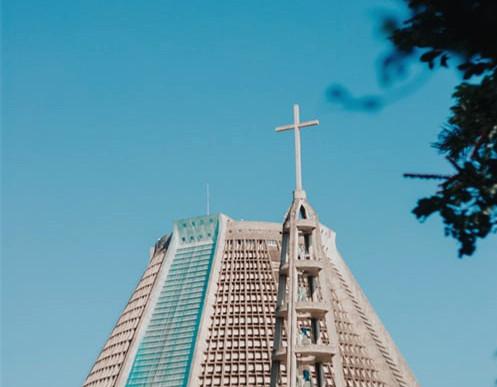The coronavirus pandemic is gradually affecting every aspect of the church, just like a capsule taken into the body is slowly released, and unconsciously adjusts the functions of the body.
In the era of peace before COVID-19, many people benefited much from the extensive development of the economy and the speeding up of urbanization. Church members continued to increase, large churches became widespread, and many preachers regarded the establishment of large churches as their goals and ideals.
The emergence of megachurches has to do with the transfer of rural churches to cities within the background of urbanization. Compared with the countryside, the city broke down its original boundaries and closures. The development of urban transportation provided the possibility for the establishment of large churches. In the past, in the countryside, a church covered a village or several neighboring villages; but now in the cities, the church opens for the whole city, and people could go for the assembly as long as the bus is accessible.
The appearance of large churches is accompanied by the guarantee of economic benefits. The larger the church is, the more offerings it likely is to get, which thus avoids the disadvantage of unstable finance of small churches. Besides, the number of megachurches ensures the religious effect of congregational worship. Religious fervor is easy to mobilize and infect everyone present, so that the development of the church will enter into the Matthew effect (cumulative advantage). The better the religious atmosphere, the more people it attracts and the bigger the church.
But the drawbacks of megachurches became apparent after the pandemic, which could be solved by increasing their numbers in a state of peace.
The drawback is the decline of religious enthusiasm when the church's daily activities are suspended by the pandemic, which leads to the decline of church participation, and the direct result is the decline of the economic income of the church.
In addition, once believers leave the church and return to their daily life, they are away from the guidance of the pastor and begin to focus more on themselves and think about their own relationship with God.
Another problem with large churches is the free-rider problem. Hitchhiking means to ride without paying a ticket. And it means, for the church, that members who give no offerings or no service, only get church favors, such as cheap meals or to get rid of the loneliness of the week, make friends or just have fun. Such believers are not in the minority in large churches, and it is their participation that increases the size of the church. If church dedication is averaged across everyone, then this free-rider problem may become apparent, because the size of the church is out of proportion to the amount of dedication.
In this case, the problem that large churches face is not how to reunite the large church, but how to maintain the concrete identity of effective believers.
The pandemic has made it impossible for believers to meet. The free-riders (believers of low identity, the religious cooler-off, etc.) are excluded, and what may be left is a handful of effective believers who retain the same kind of identity and devotion to the church as they used to; but this effective community of believers, if not carefully maintained, may be lost over time.
Therefore, the pastors need to change the old extensive pastoral ways of the large churches and return to the refined pastoral ways.
In large churches, the believers' faith identity is based on a group. In the post-pandemic era, the foundations of faith identity must be shifted because the form of the group is increasingly limited. Pastors who may have been accustomed to the pattern and atmosphere of large congregations must now adapt to the situation and face individuals.
The difficulty, however, is in how the pastors should shift from megachurch approach and become accustomed to solitude with individual believers; and how the pastor can produce a maximum pastoral effect with the minimum time cost.
One-to-one refinement, which is not practical for the shepherd, can be a special case. One pastor would not be able to shepherd many believers in one-to-one mode with even all his time. Obviously, one-to-many is the way to go. However, the number of people should not be too large, otherwise, the effect of fine pasturing will not be achieved. We should not only make every believer feel like being pastored, but also maximize the pastoral effect within the scope of the pastoral ability.
Obviously, the core group is the most appropriate choice because it is flexible and meets the requirements of pandemic prevention. At the same time, the group can form a more cohesive fellowship, which can produce more familiar personal relationships and thus bring the stability of group identity.
The post-pandemic era has brought challenges to the way pastors care for their churches. Meanwhile, the space for large churches is shrinking. Church pastoral care is bound to change from extensive to refined. This may put a higher demand on the pastors.
- Translated by Sophia Chen












